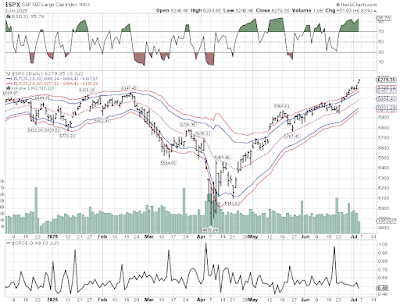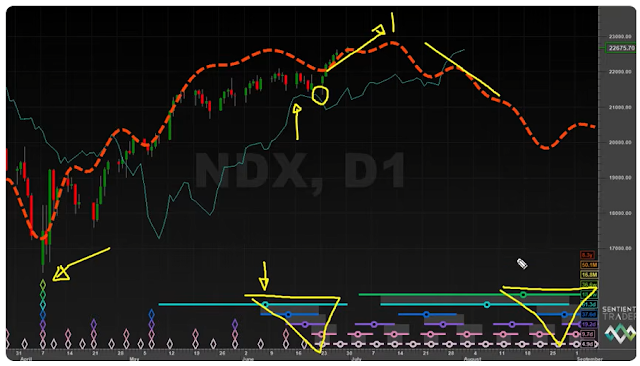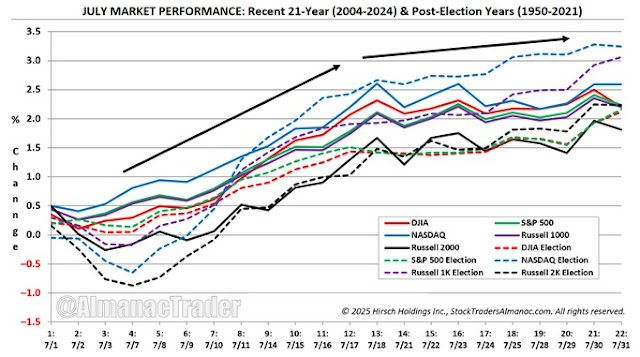The S&P finished the 4th of July week at 6,279.35 and is now up 6.76% for 2025 and 13.4% over the last 12 rolling months (July 4 - July 4), currently residing at an All Time High for at least the three day weekend.
You may recall that
the S&P experienced an 18.9% selloff from the February 19th Close of
6,144.15 to the April 8th Close of 4,982.77, exceeding 20% if measured vs
the April 8th intraday Low of 4,910.42. From that 4,982.77
Closing Low on April 8th, the S&P has now advanced 26.0%, doing so
in less than a Quarter, 86 calendar days (April 8 - July 3) to be precise.
The S&P surged 26% in just 86 days, reaching another all-time high, and has now risen 6.76% in 2025.
Historical data shows similar rallies led to gains of 19.2%+ over the next year.
Looking back through post 1950 history, I can only find five prior occasions in which the S&P has advanced 25% in less than a Quarter and none of those five occasions were anywhere near an impending top.
Certainly, one would prefer to have more than five data points from which to draw conclusions upon which to base one's market exposure but the magnitude and uniformity of the advances across the following 12 months in those five cases appears worthy of our respect. All five cases were positive over the following 1 to 12 months, up at least 19.2% one year later, 31.7% on average. None of the five cases experienced a 4% drawdown as measured from the signal Date.
Certainly, one would prefer to have more than five data points from which to draw conclusions upon which to base one's market exposure but the magnitude and uniformity of the advances across the following 12 months in those five cases appears worthy of our respect. All five cases were positive over the following 1 to 12 months, up at least 19.2% one year later, 31.7% on average. None of the five cases experienced a 4% drawdown as measured from the signal Date.
July 5, 2025



































